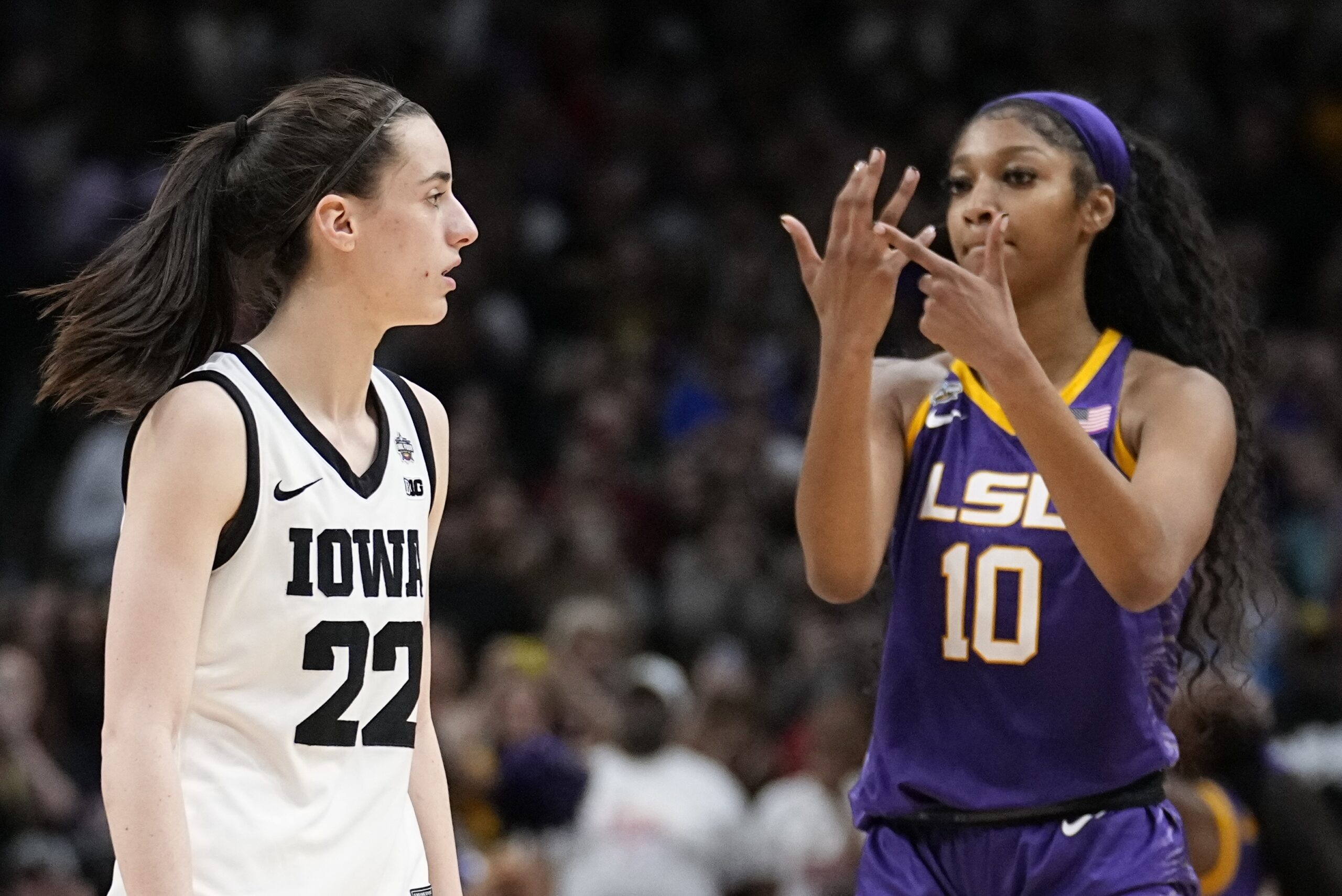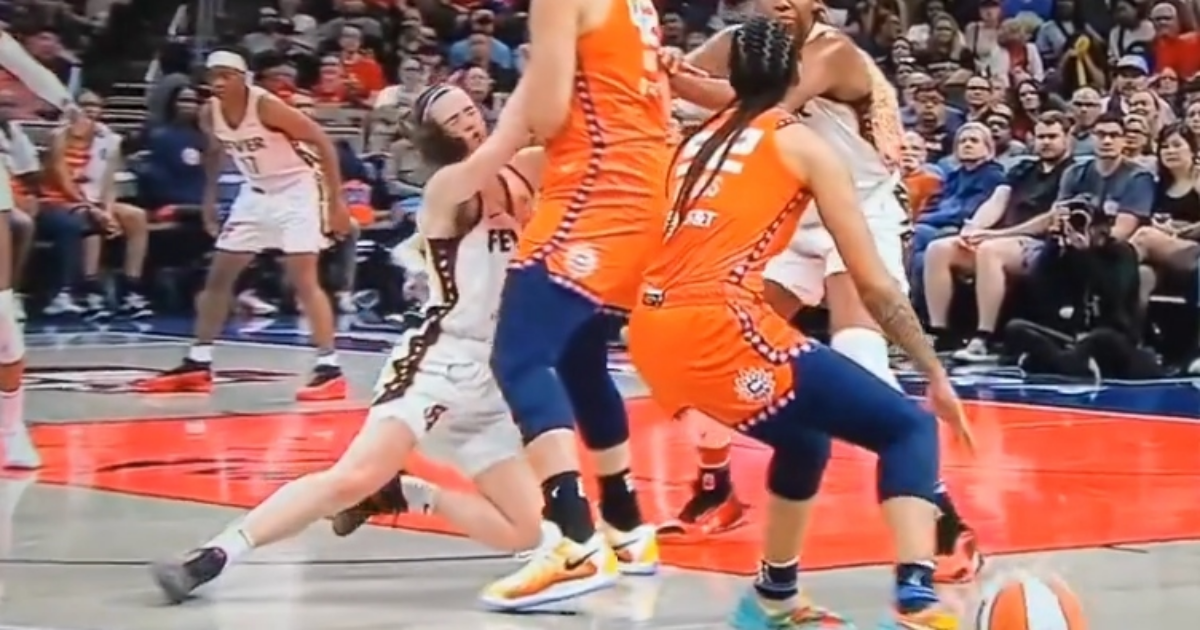Caitlin Clark’s Ankle Injury

Caitlin Clark, the Iowa Hawkeyes’ star point guard, sustained an ankle injury during a game against the Michigan Wolverines on February 12, 2023. The injury occurred in the second half when Clark landed awkwardly after attempting a layup. She immediately grabbed her ankle and was helped off the court.
Clark was diagnosed with a high ankle sprain, which is a severe injury that can take several weeks to heal. She is expected to miss the remainder of the regular season and the Big Ten Tournament. Her status for the NCAA Tournament is uncertain.
The injury is a major blow to the Hawkeyes, who are ranked No. 5 in the country. Clark is the team’s leading scorer and assists leader, and she is considered one of the best players in the country.
Severity of the Injury
A high ankle sprain is a ligament injury that occurs when the ligaments that connect the tibia and fibula bones are stretched or torn. The injury can be graded on a scale of 1 to 3, with 1 being the least severe and 3 being the most severe. Clark’s injury is believed to be a grade 2 or 3 sprain, which means that the ligaments are partially or completely torn.
Timeline of the Injury
Clark is expected to miss 4-6 weeks with the injury. She is currently in a walking boot and is using crutches to get around. She will begin physical therapy once the swelling and pain have subsided.
Potential Impact on Her Basketball Career
The injury is unlikely to have a long-term impact on Clark’s basketball career. However, it could affect her performance in the short term. Clark may not be able to play at her full potential when she returns to the court, and she may be more susceptible to re-injury.
Treatment and Recovery
Caitlin Clark’s ankle injury required immediate medical attention and a comprehensive treatment plan to facilitate healing and prevent further complications. The treatment strategy involved various approaches, including:
– Immobilization: Immobilizing the injured ankle using a cast or walking boot was crucial to restrict movement and promote stability, allowing the ligaments and tendons to heal properly.
– Rest: Resting the injured ankle was essential to minimize stress and pressure on the affected area, allowing the healing process to progress without interruptions.
– Ice Therapy: Applying ice packs to the injured ankle helped reduce swelling, pain, and inflammation, promoting faster healing.
– Physical Therapy: Once the initial inflammation subsided, physical therapy played a significant role in restoring range of motion, strength, and stability to the injured ankle. Exercises focused on improving flexibility, proprioception, and muscle coordination.
Rehabilitation Process
The rehabilitation process for Caitlin Clark’s ankle injury involved a gradual and structured approach to ensure a safe and effective recovery. The duration of rehabilitation varied depending on the severity of the injury and the individual’s healing rate, but typically spanned several weeks or months.
The rehabilitation process typically involved the following stages:
– Early Phase: During the early phase of rehabilitation, the focus was on reducing pain and swelling, regaining range of motion, and improving flexibility. Exercises included gentle stretching, isometric exercises, and light cardiovascular activities.
– Intermediate Phase: As the ankle regained strength and stability, the rehabilitation program progressed to include more challenging exercises. These exercises aimed to improve proprioception, balance, and coordination.
– Advanced Phase: The advanced phase of rehabilitation involved high-intensity exercises designed to restore full function to the injured ankle. These exercises included plyometrics, agility drills, and sport-specific movements.
Challenges and Setbacks, Caitlin clark ankle
The recovery process from an ankle injury can present several challenges and potential setbacks. Some common challenges include:
– Pain and Discomfort: Pain and discomfort are common during the early stages of recovery, especially during physical therapy exercises. Managing pain through medication or alternative therapies is crucial to facilitate rehabilitation.
– Swelling: Swelling can persist for several weeks after an ankle injury, which can limit range of motion and hinder rehabilitation progress. Elevation, compression, and ice therapy can help reduce swelling.
– Scar Tissue Formation: Scar tissue can form around the injured area, potentially restricting range of motion and causing discomfort. Regular stretching and massage can help minimize scar tissue formation.
– Re-Injury: Re-injury is a potential setback during rehabilitation, especially if the ankle is not fully healed before returning to activity. It is crucial to follow the rehabilitation plan carefully and gradually increase activity levels to minimize the risk of re-injury.
Prevention and Management

Caitlin clark ankle – Preventing ankle injuries in basketball players requires a comprehensive approach that encompasses proper training techniques, appropriate footwear, and effective management strategies. By implementing these measures, athletes can significantly reduce their risk of sustaining ankle injuries and optimize their performance on the court.
Caitlin Clark’s ankle injury has sidelined her from basketball, but her impact on the sport continues to resonate. Like the recent Singapore Airlines flight turbulence that sent shockwaves through the aviation industry, Clark’s absence has created a void in women’s basketball.
Her return to the court will be eagerly anticipated, just as the skies have been cleared for the resumption of smooth flights.
Prevention
- Strengthening exercises: Regularly performing exercises that target the muscles around the ankle, such as calf raises, ankle inversions and eversions, and balance exercises, can enhance ankle stability and reduce the likelihood of injuries.
- Proprioceptive training: Exercises that improve balance and coordination, such as single-leg squats, wobble board exercises, and agility drills, help athletes develop a better sense of body awareness and improve their ability to maintain balance during dynamic movements.
- Proper warm-up: Warming up before basketball activities is crucial for preparing the ankles for the demands of the game. Dynamic stretches that target the ankle joint, such as ankle circles and toe taps, should be incorporated into the warm-up routine.
- Appropriate footwear: Wearing basketball shoes that provide adequate ankle support and cushioning is essential for injury prevention. Shoes should fit snugly and offer stability without restricting movement.
Management
When an ankle injury occurs, prompt and effective management is crucial to minimize its impact and facilitate a faster recovery. The following steps should be taken:
- Rest: Resting the injured ankle is essential to allow the tissues to heal. Avoid activities that put stress on the ankle, such as walking or running.
- Ice: Applying ice packs to the injured area helps reduce swelling and pain. Ice should be applied for 15-20 minutes at a time, several times a day.
- Compression: Using an elastic bandage to wrap the injured ankle can help reduce swelling and provide support.
- Elevation: Keeping the injured ankle elevated above the level of the heart helps reduce swelling and promote blood flow.
- Medical attention: If the ankle injury is severe, such as a fracture or ligament tear, it is important to seek medical attention promptly for proper diagnosis and treatment.
Impact on Iowa Women’s Basketball: Caitlin Clark Ankle

Caitlin Clark’s ankle injury has had a significant impact on the Iowa Women’s Basketball team. The Hawkeyes were 10-3 before Clark’s injury, but they have gone 5-5 since then.
The team has struggled to replace Clark’s production. She is the team’s leading scorer, rebounder, and assist leader. Without her, the Hawkeyes have had to rely more on other players to step up.
Sophomore guard Kate Martin has been one of the players who has stepped up in Clark’s absence. Martin is averaging 14.8 points per game since Clark’s injury. She has also been a force on the boards, averaging 7.2 rebounds per game.
Junior forward McKenna Warnock has also been a key contributor for the Hawkeyes. Warnock is averaging 12.0 points and 6.8 rebounds per game since Clark’s injury.
Despite the contributions of Martin and Warnock, the Hawkeyes have not been able to match their success from before Clark’s injury. The team has struggled to score consistently and has been more prone to turnovers.
The Hawkeyes will need to find a way to replace Clark’s production if they want to make a run in the NCAA Tournament. Martin and Warnock have been solid contributors, but the team will need more from other players to step up.
Return to Play
Caitlin Clark’s return to play is highly anticipated by Iowa Women’s Basketball and fans alike. While an exact timeline has not been established, her progress has been encouraging. The decision to clear her for play will be based on multiple factors, including the severity of the injury, her recovery progress, and the medical team’s assessment.
Factors Determining Return Timeline
Several factors will influence Caitlin Clark’s return timeline:
– Severity of Injury: The severity of the ankle sprain will play a significant role in determining her recovery time. More severe sprains require longer healing periods and more extensive rehabilitation.
– Rehabilitation Progress: Caitlin Clark’s adherence to the prescribed rehabilitation program and her body’s response to treatment will impact her recovery timeline. Consistent effort and positive progress will accelerate her return.
– Medical Clearance: The final decision to clear Caitlin Clark for play will be made by the medical team. They will assess her physical condition, range of motion, strength, and stability before granting her clearance.
Expectations and Predictions
Upon her return, Caitlin Clark is expected to make a significant impact on the Iowa Women’s Basketball team. Her exceptional ball-handling skills, shooting ability, and court vision will be invaluable assets. While it may take some time for her to regain her peak form, her determination and work ethic suggest that she will return as a formidable force.
Caitlin Clark’s ankle injury, while unfortunate, pales in comparison to the devastation caused by the recent tornado in Greenfield. The storm left a trail of destruction, causing widespread damage to homes, businesses, and infrastructure. Amidst the wreckage, stories of resilience and community spirit emerged, as neighbors came together to help those in need.
As Caitlin recovers from her injury, she can find solace in knowing that her community is rallying around those affected by the greenfield tornado damage .
Caitlin Clark, a star basketball player, recently suffered an ankle injury. While her recovery is underway, the news of the devastating tornado in Iowa has brought a sense of perspective. The resilience and determination shown by the people of Iowa in the face of adversity echoes the spirit of Caitlin Clark’s unwavering pursuit of her goals, despite her current setback.
Her ankle injury may temporarily sideline her, but her indomitable spirit will guide her through her rehabilitation and back to the court stronger than ever before.
Caitlin Clark’s ankle injury is a major blow to the Iowa Hawkeyes, but it’s not the only thing that’s been turbulent lately. The turbulence Singapore Airlines has been experiencing has caused delays and cancellations, leaving passengers stranded. While Clark’s injury is a setback for the Hawkeyes, the turbulence Singapore Airlines has been experiencing is a reminder that even the best-laid plans can be disrupted by unexpected events.
Caitlin Clark’s ankle injury has raised concerns about her availability for the upcoming season. While the severity of the injury is still unknown, it is a reminder of the fragility of athletes and the importance of taking precautions to prevent injuries.
This is especially true in high-risk sports, such as basketball. The Iranian president’s recent helicopter crash is a tragic example of the dangers that can be involved in even the most routine activities. It is important to be aware of the risks and to take steps to mitigate them whenever possible.